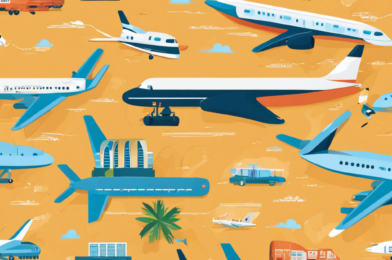Travel hacking has become an increasingly popular way to turn your everyday spending into incredible travel experiences. With the strategic use of rewards credit cards, loyal program memberships, and a few clever tricks, anyone can learn how to maximize their rewards points and travel the world for next to nothing. So, what exactly is travel hacking, and how can you get started?
First and foremost, travel hacking is about taking advantage of rewards programs. This can include signing up for rewards credit cards that offer lucrative welcome bonuses and then using those cards for all your everyday purchases. From groceries and gas to restaurant meals and online shopping, every dollar you spend can earn you points or miles toward your next vacation.
But it’s not just about credit card rewards. Travel hacking also involves maximizing loyalty programs offered by hotels, airlines, and rental car companies. By signing up for these programs and being strategic about how you earn and redeem points, you can unlock even more benefits and discounts. For example, many hotels offer perks such as free nights, room upgrades, or exclusive experiences to members of their loyalty programs.
One of the key strategies of travel hacking is to never pay full price when you don’t have to. This might mean using your rewards points to book flights or hotel stays, or it could involve taking advantage of promotions and special deals. For instance, many credit cards offer introductory bonuses where you can earn a significant number of points by spending a certain amount within the first few months of opening an account.
Another travel hacking tactic is to use transferable rewards currencies. Some credit card rewards programs allow you to transfer your points to a variety of different loyalty programs, giving you more flexibility when it comes time to redeem your points. This can be especially useful if you want to book with multiple airlines or hotel chains, as it allows you to consolidate your points and get the most value from them.
While travel hacking can unlock incredible opportunities, it’s important to remember that it requires research and organization. Keeping track of multiple rewards programs, their earning structures, and redemption options can be challenging. Fortunately, there are many resources available to help you navigate the world of travel hacking, including blogs, online forums, and even dedicated websites that offer tools to help you maximize your points.
Of course, travel hacking isn’t without its potential pitfalls. One of the biggest dangers is overspending. It can be tempting to go overboard with your spending in an effort to earn more points, but this defeats the purpose of travel hacking. It’s important to only spend what you can afford to pay off each month, as carrying a balance on a rewards credit card will often incur high-interest charges that negate any benefits you may have earned.
Additionally, some rewards credit cards come with annual fees, which can eat into the value of the points you earn. It’s important to do the math and make sure that the benefits you’re getting from the card outweigh any fees you may be paying.
Overall, travel hacking can be an incredibly rewarding hobby that allows you to see the world on a budget. By being strategic about your spending and taking advantage of rewards programs, you can turn your everyday purchases into unforgettable travel experiences. So, what are you waiting for? Start planning your next adventure today!
In conclusion, travel hacking is a fun and exciting way to make your travel dreams a reality. With a bit of knowledge, organization, and the willingness to try new things, anyone can begin maximizing their rewards points and booking trips they once thought were out of reach. Happy travels!


